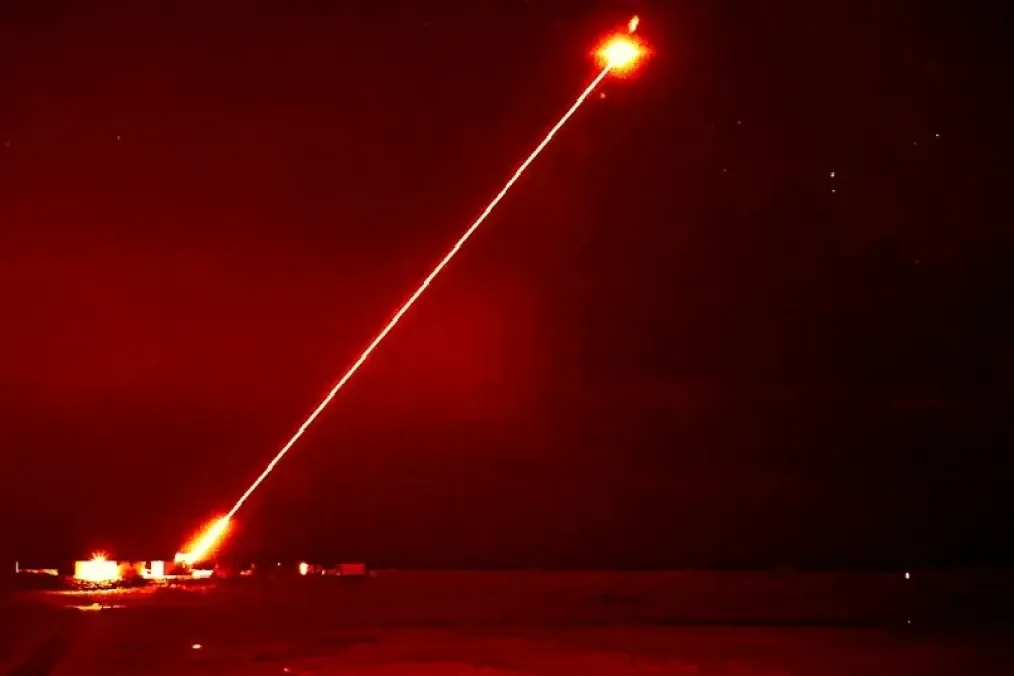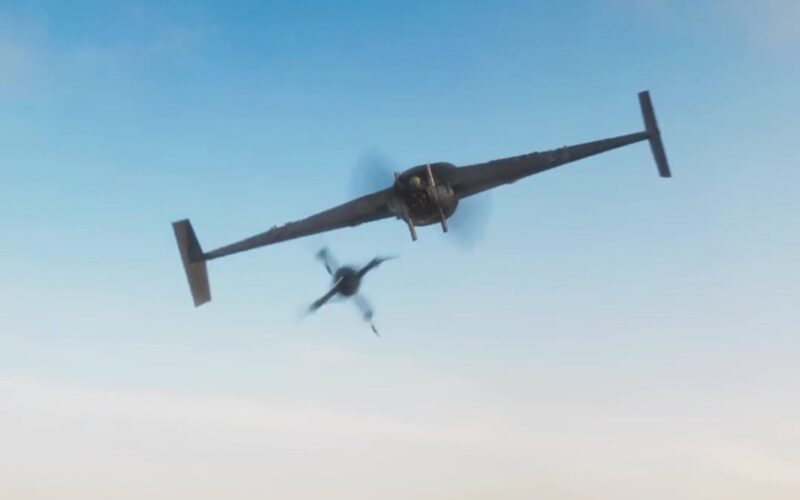Countering Small FPV
Kamikaze Drones
A Comparative Analysis of Military and Commercial Solutions
The Evolving Battlefield
The conflict in Ukraine has demonstrated the transformative impact of First-Person View (FPV) kamikaze drones on modern warfare, with drones responsible for 60-70% of equipment damage and both sides producing millions of units annually.
Executive Summary
The proliferation of FPV kamikaze drones has created an unprecedented challenge for modern militaries, characterized by extreme cost asymmetry and rapid technological evolution.
Key Findings
- • Directed energy weapons offer $1-5 per shot costs
- • Fiber-optic drones are immune to EW jamming
- • AI-guided systems reduce operator dependence
- • Layered defense is essential for effectiveness
Threat Overview
The conflict in Ukraine has served as a stark demonstration of the transformative impact of First-Person View (FPV) kamikaze drones on modern warfare. These relatively inexpensive and accessible unmanned aerial systems have become a ubiquitous and potent threat, fundamentally altering battlefield dynamics [44, 264].
The Cost Asymmetry Challenge
Defense Secretary Pete Hegseth noted the unsustainable pattern of using "exquisite multi-million-dollar weapons" to shoot down increasingly sophisticated drones that may cost only a few hundred dollars [9]. This economic imbalance puts a disproportionate burden on the defender.
Fiber-Optic Guidance
Fiber-optic guided FPVs are largely immune to conventional electronic warfare jamming, as control signals are transmitted through a physical cable [3, 22].
- • Operational radius: 5-20 km (up to 41 km reported)
- • Immune to RF jamming
- • Higher cost than RF drones
AI Integration
AI-enabled drones can operate with higher autonomy, potentially identifying and homing in on targets without continuous operator input [33, 65].
- • "Fire-and-forget" capability
- • Reduced vulnerability to jamming
- • 3D-printed components acceleration
Counter-FPV Drone Technologies
Counter-Drone Technology Hierarchy
Win_Hit, Coyote"] B --> B2["AI-Controlled Turrets
Sky Sentinel"] C --> C1["High-Energy Lasers
Iron Beam, Tryzub"] C --> C2["HPM Systems
Leonidas, THOR"] D --> D1["RF Jammers
Portable Guns"] D --> D2["GPS Spoofing
Vehicle Systems"] E --> E1["Trophy APS
Top-Attack Defense"] E --> E2["Iron Fist
Multi-Threat"] F --> F1["Autonomous Detection"] F --> F2["Predictive Engagement"] classDef primaryNode fill:#1e3a8a,stroke:#1e40af,stroke-width:3px,color:#fff,font-weight:bold classDef categoryNode fill:#3b82f6,stroke:#2563eb,stroke-width:2px,color:#fff,font-weight:600 classDef technologyNode fill:#f8fafc,stroke:#1e3a8a,stroke-width:2px,color:#1e3a8a,font-weight:500 class A primaryNode class B,C,D,E,F categoryNode class B1,B2,C1,C2,D1,D2,E1,E2,F1,F2 technologyNode
Kinetic Interceptor Drones
Win_Hit (Ukraine)
- Speed: Up to 300 km/h
- Cost: ~$5,000 per unit
- Mission Duration: 7-10 minutes
- Launch: Ground, handheld, or air-dropped
Nearly 550 Russian drones intercepted during testing [60, 62]
VARTA DroneHunter
- Armament: Dual 12-gauge barrels
- Range: 5-20 meters
- Mount: Copter or FPV platform
- Type: Close-range interceptor
Russian Systems
- Kinzhal: Direct collision interceptor
- Tarantul-Ptitselov: Net-based system
- Status: Early development stages
Directed Energy Weapons
Game-Changing Cost Efficiency
Lasers offer extremely low cost per shot: Israel's Iron Beam at $3.50, UK's DragonFire at $13 per 10-second burst, and Ukraine's Tryzub at approximately $1 per shot [22, 52, 342].
Iron Beam (Israel)
Tryzub (Ukraine)
DragonFire (UK)
Silent Hunter (China)
Laser System Limitations
- • Effectiveness degraded by adverse weather (rain, fog, dust)
- • Requires 2-10 seconds "dwell time" on target
- • Thermal blooming can weaken beam strength
- • Safety concerns for eye damage and property ignition
Electronic Warfare & Jamming Systems
EW Attack Vectors
-
Video Signal Jamming
Disrupts live feed to operator
-
GPS/GLONASS Jamming
Causes navigation disorientation
-
Control Frequency Jamming
Severs operator control link
EW Effectiveness Challenges
Conventional EW is becoming less effective due to:
- • Fiber-optic guidance immunity
- • Dynamic frequency hopping
- • Inertial navigation fallback
- • AI-enabled autonomous operation
Active Protection Systems
Trophy (Rafael)
- Radar: Elta EL/M-2133 F/G band
- Coverage: 360-degree detection
- Limitation: 55° elevation maximum
- Update: Enhanced top-attack detection
Vulnerable to top-attack drones due to elevation limits [17]
Iron Fist (Elbit)
- Multi-Threat: RPGs, ATGMs, drones
- Countermeasures: Hard and soft-kill
- Deployment: US Army M2 Bradley IFVs
- Update: Enhanced anti-drone capabilities
Adapting to counter drone-dropped munitions [20]
AI-Controlled Turrets & Automated Systems
Sky Sentinel (Ukraine)
- Armament: .50-caliber M2 Browning
- Target Speed: Up to 800 km/h
- Cost: ~$250,000 per unit
- Operation: Fully autonomous engagement
10-30 units estimated for city protection [59]
MACS (Seraphim Defence Systems)
- Range: Up to 150 meters
- Countermeasures: Kinetic & electromagnetic
- Targets: AI-driven and fiber-optic drones
- Deployment: Vehicles, border security, infrastructure
AI-driven detection from multi-sensor fusion [48]
Effectiveness Against Advanced FPV Drones
System Effectiveness Comparison
High Effectiveness
Khizhak Shooter"] B --> E["Directed Energy
High Effectiveness
Physical Damage"] B --> F["Electronic Warfare
No Effectiveness
Cable Immune"] C --> G["AI-Enhanced C-UAS
Good Effectiveness
MACS, Sky Sentinel"] C --> H["Laser Systems
Moderate Effectiveness
Evasive Maneuvers"] C --> I["Traditional EW
Reduced Effectiveness
Autonomous Operation"] classDef threatNode fill:#f59e0b,stroke:#d97706,stroke-width:3px,color:#fff,font-weight:bold classDef highEffect fill:#10b981,stroke:#059669,stroke-width:2px,color:#fff,font-weight:600 classDef moderateEffect fill:#f59e0b,stroke:#d97706,stroke-width:2px,color:#fff,font-weight:600 classDef lowEffect fill:#ef4444,stroke:#dc2626,stroke-width:2px,color:#fff,font-weight:600 class A threatNode class B,C threatNode class D,E,G,H highEffect class I moderateEffect class F lowEffect
vs. Fiber-Optic Guided Drones
Fiber-optic drones are largely immune to traditional EW tactics due to physical cable control [152, 621].
Effective Countermeasures:
- • Kinetic interceptors (direct hit on cable/drone)
- • Directed energy weapons (physical damage)
- • Specialized interceptors like Khizhak Shooter
Challenge: NATO Innovation Challenge focused on countering fiber-optic drones through hackathon [153]
vs. AI-Guided Drones
AI-guided drones operate with reduced operator dependence, making them less susceptible to jamming [33, 638].
Counter-Approaches:
- • AI-powered interceptor drones
- • Advanced sensor fusion with AI processing
- • Adversarial attacks on computer vision
- • Physical destruction remains viable
Example: Ukraine's TFL-1 module enables autonomous target engagement [638]
Cost-Effectiveness Analysis
Effector-to-Threat Cost Ratios
| C-UAS Effector Type | Example System(s) | Cost per Engagement | Threat Drone Cost | Cost Ratio |
|---|---|---|---|---|
| Traditional SAMs | Patriot PAC-3, Osa-AKM | $480K - $3M+ | $500 - $1,000 | 960:1 to 6M:1 |
| MANPADS | Stinger | >$400K | $500 - $1,000 | >800:1 |
| Specialized C-UAS Missiles | Skynex, Gepard ammo | $100K+ | $500 - $1,000 | >200:1 |
| Kinetic Interceptor Drones | ODIN Win_Hit (Ukraine) | ~$5,000 | $500 - $1,000 | 5:1 to 10:1 |
| FPV Drone as Interceptor | Ukraine systems | ~$500 | $500 - $1,000 | ~1:1 |
| Directed Energy (Laser) | Tryzub (Ukraine) | ~$1 | $500 - $1,000 | 0.001:1 |
| Directed Energy (Laser) | Iron Beam (Israel) | ~$3 - $5 | $500 - $1,000 | 0.005:1 |
| Electronic Warfare | RF Jammers | $1 - $10 | $500 - $1,000 | 0.01:1 |
Data compiled from multiple sources including [243, 324, 342, 345]
Deployment & Maintenance Costs
-
Traditional Missile Systems
High upfront investment, complex maintenance, expensive ammunition stockpiles
-
Directed Energy Weapons
High initial cost, low operational costs, reduced logistical burden
-
Electronic Warfare
Variable costs, portable systems more affordable, software updates critical
-
Interceptor Drones
Moderate costs, scalable deployment, routine battery and component maintenance
Economic Reality
The cost asymmetry makes traditional missile defense economically unsustainable against mass drone attacks.
"Using exquisite multi-million-dollar weapons to shoot down $500 drones is unsustainable" - Defense Secretary Hegseth [9]
Key System Profiles
Ukrainian Developed Systems
Tryzub Laser System

- Range: 3,000-5,000m (destruction)
- Blinding: Up to 10,000m
- Cost per shot: ~$1
- Targets: Drones, missiles, aircraft
Developed with Brave1 defense cluster [253, 257]
ODIN Win_Hit

- Speed: Up to 300 km/h
- Cost: ~$5,000 per unit
- Mission: 7-10 minutes
- Launch: Multiple platforms
Nearly 550 interceptions in testing [70, 72]
Sky Sentinel

- Armament: .50-cal M2 Browning
- Target Speed: Up to 800 km/h
- Cost: expensive, ~250k per unit
- Operation: Fully autonomous
10-30 units for city protection [59, 240]
Israeli Developed Systems
Iron Beam (Rafael)
- Drone Range: 15-20km
- Missile Range: 8-12km
- Status: Combat-proven vs Hezbollah drones
- Development: Rafael & Elbit Systems
First combat use confirmed [244, 563]
Active Protection Systems
Trophy (Windbreaker)
- • 360° radar coverage
- • Enhanced top-attack detection
- • Combat-proven on Merkava tanks
Iron Fist
- • Multi-threat protection
- • US Army M2 Bradley integration
- • Hard and soft-kill options
Upgraded for drone threats [194, 674]
Future Trends & Developments
C-UAS Market Growth Projection
332% growth driven by military and critical infrastructure demand [414]
AI & Machine Learning
- • Enhanced sensor fusion algorithms
- • Automated threat assessment
- • Autonomous interceptor swarms
- • Predictive engagement systems
- • Adversarial AI countermeasures
Directed Energy Advancements
- • More powerful, compact systems
- • Improved atmospheric compensation
- • Multi-target engagement capability
- • Enhanced beam control systems
- • All-weather performance improvements
Adaptation & Counter-Adaptation Cycle
Drone warfare is characterized by continuous technological evolution and counter-measures development.
Drone Evolution
- • Stealthier profiles and materials
- • Lower acoustic signatures
- • Frequency hopping protocols
- • AI-guided autonomous operation
C-UAS Response
- • Advanced multi-spectral sensors
- • Agile EW systems
- • AI-driven decision support
- • Networked defense architectures
Conclusion & Recommendations
Most Effective & Cost-Efficient Solutions
Top Performers
- Directed Energy Weapons: $1-5 per shot, deep magazine capacity
- Electronic Warfare: Low-cost, reusable against RF-controlled drones
- Kinetic Interceptors: Moderate cost, effective vs all guidance types
- AI-Controlled Systems: Rapid autonomous engagement capability
Cost Challenges
- Traditional SAMs: 960:1 to 6M:1 cost ratios unsustainable
- MANPADS: >800:1 cost ratios prohibitive
- APS Systems: $50K-$100K per intercept for high-value assets only
- Specialized Missiles: >200:1 cost ratios limiting
